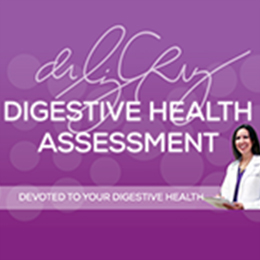 Colonoscopy (koh-luh-NAH-skuh-pee) enables the physician to look inside your entire large intestine, the colon. The colon is the last portion of the digestive tract, or gastrointestinal tract. It is a hollow tube that starts at the end of the small intestine and ends at the rectum and anus. The colon is about 5 feet long, and its main role is the store unabsorbed food waste and absorbs water and other body fluids before the waste is eliminated as stool. A colonoscopy is a procedure that is used to diagnose the causes of unexplained changes in bowel habits, rectal bleeding, diarrhea, abdominal pain. It is also used to look for early signs of cancer in the colon and rectum. Colonoscopy enables the physician to see inflamed tissue, abnormal growths (ie. polyps), ulcers, and bleeding.
Colonoscopy (koh-luh-NAH-skuh-pee) enables the physician to look inside your entire large intestine, the colon. The colon is the last portion of the digestive tract, or gastrointestinal tract. It is a hollow tube that starts at the end of the small intestine and ends at the rectum and anus. The colon is about 5 feet long, and its main role is the store unabsorbed food waste and absorbs water and other body fluids before the waste is eliminated as stool. A colonoscopy is a procedure that is used to diagnose the causes of unexplained changes in bowel habits, rectal bleeding, diarrhea, abdominal pain. It is also used to look for early signs of cancer in the colon and rectum. Colonoscopy enables the physician to see inflamed tissue, abnormal growths (ie. polyps), ulcers, and bleeding.
For the procedure, you will lie on your left side on the examining table. You will be given pain medication and a mild sedative to keep you comfortable and to help you relax during the exam. The physician will insert a long, flexible, lighted tube into your rectum and slowly guide it into your colon. The tube is called a colonoscope (koh-LON-oh-skope). The scope transmits an image of the inside of the colon, so the physician can carefully examine the lining of the colon. The scope bends, so the physician can move it around the curves of your colon. You may be asked to change position occasionally to help the physician move the scope. The physician places air through the scope into your colon, which opens the folds of the colon and helps the physician see better.
If anything unusual is in your colon, like inflamed tissue, the physician can remove a piece of it using tiny instruments passed through the scope. That tissue (biopsy) is then sent to a lab for testing. The physician can remove most abnormal growths in your colon, like a polyp. A polyp is a growth in the lining of the bowel. Polyps can be removed using tiny tools that are passed through the scope. Most polyps are not cancerous, but they could turn into cancer. Just looking at a polyp is not enough to tell if it is cancerous. When a polyp is removed it is sent to the lab to be examined under a microscope by a pathologist. By finding and removing these polyps, a colonoscopy likely prevents most colon cancers from ever forming. If there is bleeding in the colon, the physician can pass a heater probe, or electrical probe, or inject special medicines, through the scope in order to stop the bleeding.
Bleeding and puncture of the colon are possible complications of a colonoscopy which could require an emergent operation. However, such complications are uncommon.
Colonoscopy takes 30 to 60 minutes. The sedative and pain medicine should keep you from feeling much discomfort during the exam. You will need to remain at the endoscopy center for 1 to 2 hours until the sedative wears off.
Preparation for Examination
For a thorough examination of the colon, it is very important that the colon is completely empty prior to the exam. For proper bowel cleansing, please refer to the prep instructions that were given to you for your scheduled exam.
On the day of your exam
Check-in at the location indicated on your pamphlet.
When you arrive please check in with the receptionist. You will be asked to undress and put on a patient gown. A nurse will discuss your medical history. Please let the nurse know if you are allergic to any medicines. The nurse will take your temperature, pulse, and blood pressure, and will place a small intravenous (IV) catheter in your arm vein for sedative medications to be given. You will be asked about your transportation person. You must have someone who will drive you home. You will be asked to sign a consent form authorizing the physician to perform the procedure.
The examination
Each step of the examination will be explained to you.
You may leave your dentures in place. Your eyeglasses will be removed. A nurse will help you to get comfortable lying on your left side. The doctor will examine your rectum with a gloved lubricated finger. Then he/she will insert the lubricated flexible colonoscope, this may give you a mild sensation of wanting to move your bowels. As the colonoscope is carefully advanced through the colon, the doctor will examine the bowel lining thoroughly. You may feel some cramping or gas due to the air the doctor uses to open up the folds of the colon. Breathing deeply and slowly will help you to relax. You may be asked to change positions during the procedure to assist in passage of the colonoscope.
After your examination, before you go home
You will be observed closely by the nurses until you are awake. You may feel some bloating from the air inserted during the procedure. You will feel more comfortable if you expel this air.
Many people do not recall any of the procedure because of the effect of the sedative medication. The doctor will speak with you before you leave. When the nursing staff assesses that you are ready to leave, you will be given final instructions. When you leave, it must be with your transportation person.
After your examination, at home
After you leave the outpatient center or hospital:
- Do not drive or operate mechanical equipment until the next day.
- Do not drink alcohol for 24 hours.
- You may eat and resume your normal activities as you feel able unless otherwise instructed.
- Walking, a warm bath, drinking warm fluids, or lying on your left side with knees drawn up will help you to pass any air remaining in your colon.





